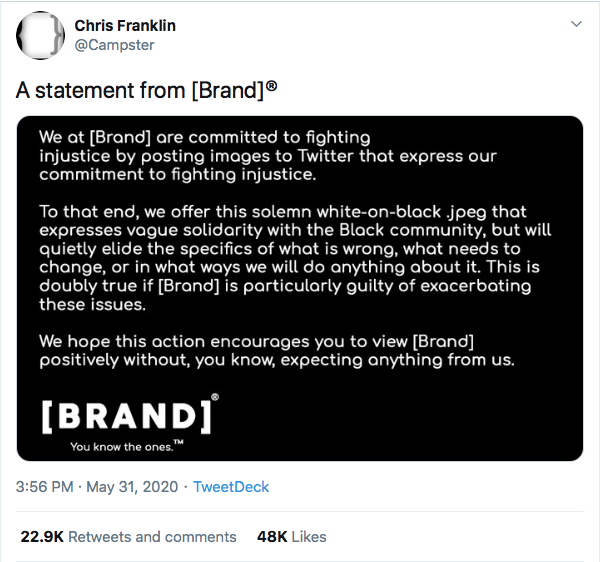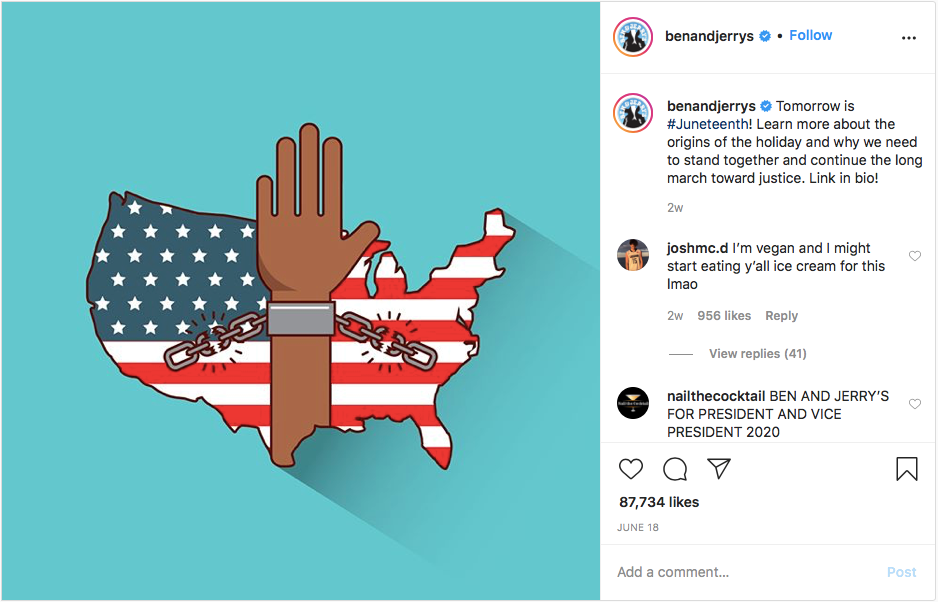This blog was written by D+P Intern Jenna Muir.
In our digital age, taking a stand on social justice issues goes far beyond marching in protests. It can also mean using social media to share, educate, donate and call others to support your cause.
And for some, it also means watching what brands will say and do and holding them to especially high standards.
Members of Generation Z increasingly purchase from organizations that show corporate social responsibility and support for human rights. This demographic also makes up about 26% of the U.S. population, giving it significant spending power. This impact will only grow in coming years, as the members of Gen Z get older.
All of these factors have caused many companies to rethink their communication strategies.
So, what are brands saying and doing?
Many brands participated in #BlackoutTuesday on June 2, 2020 – an initiative that originated in the music industry but was quickly embraced by a larger community – by posting a black square and stopping all other content-sharing for the day.
Along with this, a multitude of statements were released by various companies.
Disney expressed, “We stand against racism. We stand for inclusion. We stand with our fellow Black employees, storytellers, creators and the entire Black community. We must unite and speak out.”
Google placed the statement, “We stand in support of racial equality, and all those who search for it” on its homepage.
Nike shared a 60 second video urging people not to ignore issues of racism in America.
But with so many brands speaking up, the overarching message from consumers becomes: Don’t just say it. Do it.
Authenticity is deeply important when it comes to communicating a brand’s stance on these issues, and sometimes a one-time statement does not accomplish this.
In fact, some feel that many of the statements are hollow and ineffective, as pointed out in this Tweet from Chris Franklin that inserts a hypothetical [Brand] into a generic statement.


Yes, making a statement is important – because staying silent contributes to the problem, as Netflix pointed out in a Tweet – but many people want more than just words. They want action. They want to know that brands actually stand by what they say.
Ruby Media Group suggests asking the question, “Can my company sustain positive, continuous action towards this cause beyond one post?” A few steps it recommends are highlighting diverse voices, making donations to organizations such as Defy Ventures, and training employees to be mindful of potential bias and seek to eliminate it.
Here are a few examples of how brands are taking action:
Ben & Jerry’s not only released statements in response to recent acts of police brutality and racial injustice, but has also continued to share information and facts to educate its audience on these issues, often directing people to links in its bio to learn more.

These posts are receiving comments such as, “I didn’t even need an excuse to eat your ice cream, but now I have one ?I’ll single handedly keep your business afloat,” and, “Honestly, I’m so in love with the Ben and Jerry’s brand right now. Always been a fan, but even more lately.”
Bank of America announced its 4-year commitment to donate to communities of color, specifically focusing on health, job training, support to small businesses and housing.

Sephora joined the 15 Percent Pledge, sharing its commitment to dedicating 15% of its shelving space to Black-owned businesses and products.
Taking a more creative approach, Crayola showed a value for diversity by announcing its Colors of the World crayon pack – a collection filled with a wide array of shades to represent various skin tones.
To summarize, many people, particularly those in Generation Z, are looking for companies that take action – and there are a lot of different ways to do so.
The key is to fortify statements with real efforts, being careful not to hop on a bandwagon without actually supporting the cause with action. This type of authenticity will reassure your audience and build trust.


